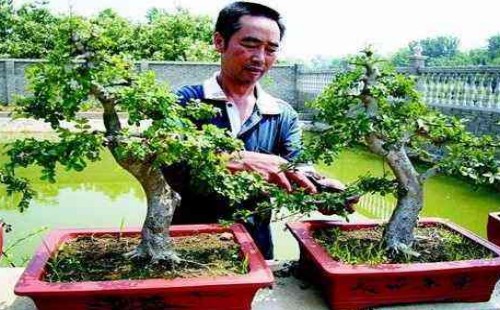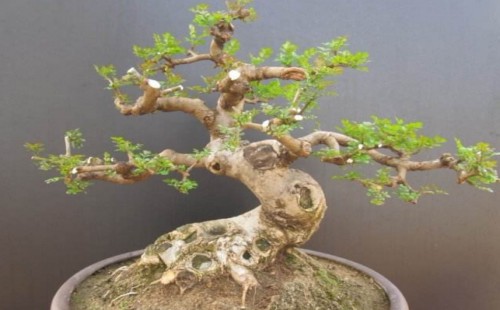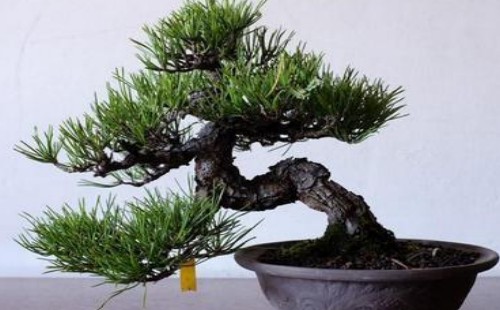Treatment of Branches in the Modeling of Fraxinus chinensis Bonsai
Pruning is one of the most commonly used means of bonsai modeling, and how to prune branches to be more in line with the aesthetic has always been worth exploring by bonsai creators. However, for different creators, their creative character, thinking, temperament, self-cultivation and preferences are often different, so there are often differences in the pursuit and orientation of beauty. Therefore, it is almost impossible for different creators to organically unify aesthetic effect and value orientation.

As a brand-new artistic creation in the new era, Jie Bai Wax Bonsai has its own set of rules in the process of creation because of its relative independence in creative techniques and forms of artistic expression. Especially in the modeling process, there is something unique about the deletion and retention of the branches involved in the bonsai framework. Whether it is the proportion, angle or outline, aesthetic and other factors, there are relatively independent propositions in plastic surgery and pruning.
First, stay and fix the support
For the cultivation of ash trees, especially pile scenes, attention should be paid to the cutting of redundant branches in the process of retaining branches. If you are not sure how to stay because of the numerous branches and buds on the pile scene, or if the conception and creativity of the bonsai are biased, it will inevitably lead to the phenomenon of wrong cutting. Although it can be adjusted in the later stage, it often leads to the accumulation of branches and modeling for too long. The fixed support is the basic condition, which needs to be integrated into the creator's thought according to the characteristics of straight, oblique, curved, lying, hanging, facing water and so on. The redundant and complicated branches and buds should be cut off in time in the process of retaining branches, so as to save nutrients and strengthen the retention of branches, so as to speed up the pace of pruning and shaping.
II. Balanced proportion
During the period of storing branches, due to various factors, the original how to trim, to what extent, and the balance of branch thickness often run through the whole bonsai modeling process and affect the overall framework of bonsai. Among them, whether the proportion of branch and stem, branch support, branch support and secondary vein cascade is coordinated or not needs to be made clear before cutting, so that we can deal with it calmly. After figuring out the context, cut it according to the law of science, so that it can be just right. Therefore, in order to balance the proportion of branches, pruning work is very elegant.
Third, angle orientation
In the process of pruning, for the problems such as the angle of the branches and buds of the bonsai, the direction of the branches, the uneven phenomenon between each other, and the expansion and rotation of the branches up and down, if the pruning angle is not right, it is often easy to make the modeling effect look too rigid and mechanical. even give people a sense of far-fetched. Although sometimes it can be remedied by means such as Panza, it will lose the beauty of nature. Therefore, before cutting, we must choose a good angle, comprehensive consideration, do not care about one at the expense of the other. In other words, the trend of the branches, the spatial state and the relationship with other branches must be clear, and they should be conceived well in advance to reduce misjudgment and misjudgment. Therefore, after selecting a good angle, then make a precise trim.
IV. Contour control
The outline mentioned by the editor here is mainly the outer outline of the bonsai framework, which is the overall shape of the bonsai. In the process of determining the outline, the length of a few branches should obey and serve the whole, and the points and lines should be integrated into the whole. The principle is: overall observation, local pruning, global adjustment. After a series of pruning and improvement treatment, the white wax bonsai tree will gradually become plump and mature, and this stage can also be regarded as the final work in the bonsai modeling process. The focus of the treatment is to coordinate the overall relationship between the opening and closing of the branch support length and the outline.
Time: 2019-06-06 Click:
- Prev

How to prune the white wax bonsai
Beautiful bonsai works must have unique modeling, and modeling is often inseparable from pruning, and pruning means play a very important role in the process of bonsai modeling. Because the branches are cut well or not, it will directly affect the beauty and ornamental effect of bonsai. The same is true for white wax bonsai.
- Next

Modeling techniques of qu Gan Bonsai
Qu Gan style bonsai is not only very graceful in posture, but also varied and colorful, but the modeling techniques used are the same, ever-changing and not separated from its clan. Because of this, we often need to pay attention to observe the growth morphology of various tree species in our daily life.
Related
- Fuxing push coffee new agricultural production and marketing class: lack of small-scale processing plants
- Jujube rice field leisure farm deep ploughing Yilan for five years to create a space for organic food and play
- Nongyu Farm-A trial of organic papaya for brave women with advanced technology
- Four points for attention in the prevention and control of diseases and insect pests of edible fungi
- How to add nutrient solution to Edible Fungi
- Is there any good way to control edible fungus mites?
- Open Inoculation Technology of Edible Fungi
- Is there any clever way to use fertilizer for edible fungus in winter?
- What agents are used to kill the pathogens of edible fungi in the mushroom shed?
- Rapid drying of Edible Fungi

